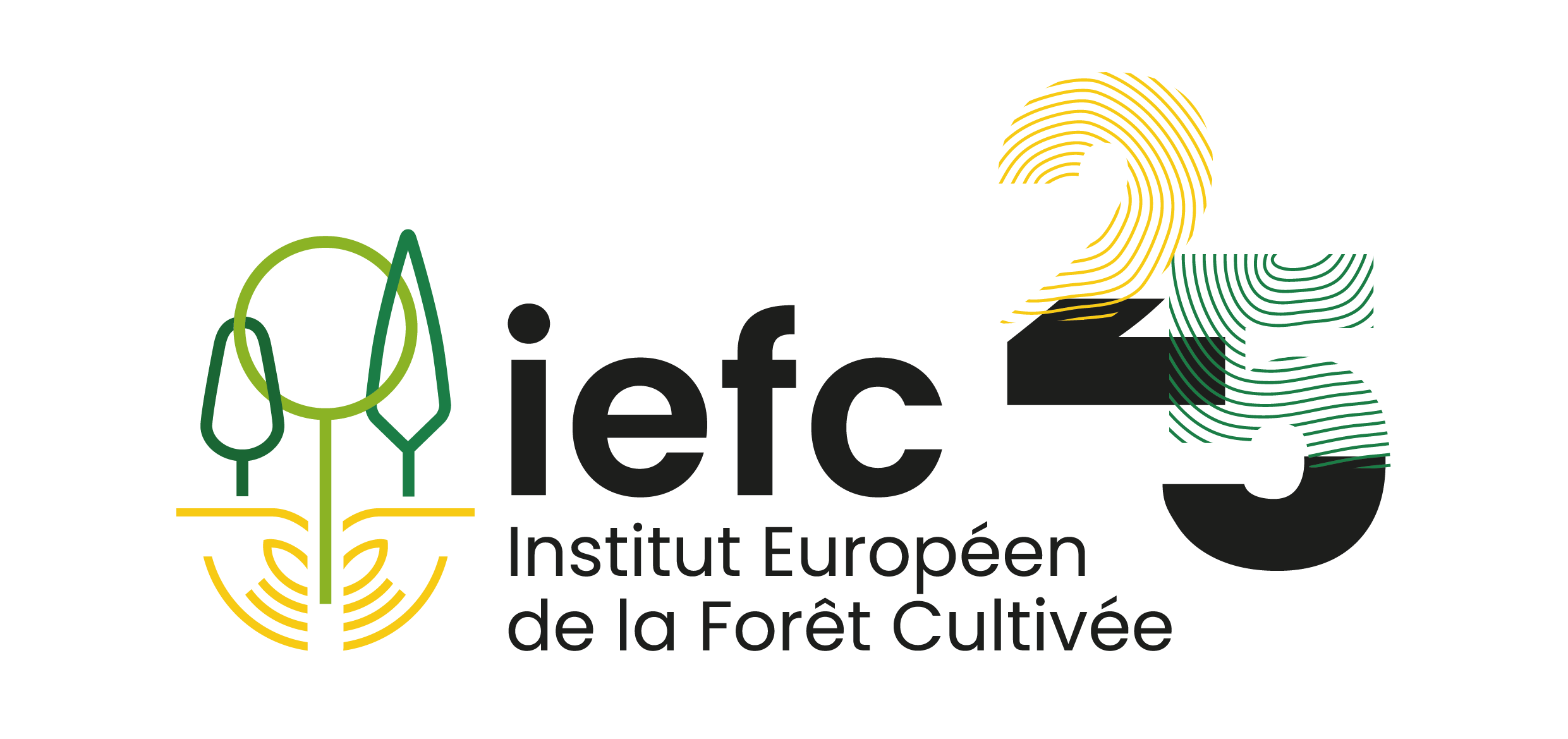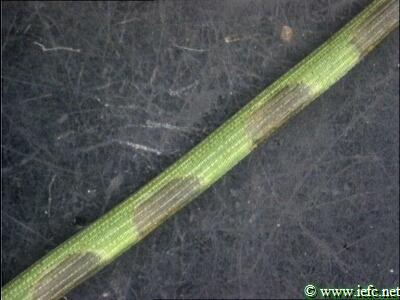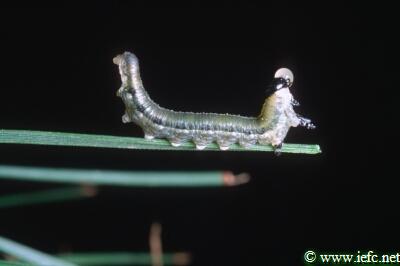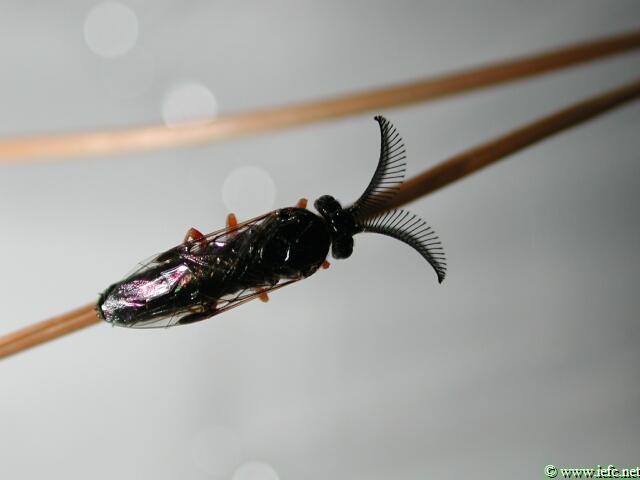Lesser pine sawfly
Neodiprion sertifer (Geoffroy) (Hymenoptera, Diprionidae)
Synonym: Diprion sertifer.
European pine sawfly, Fox-coloured sawfly.
Host tree
Identification
- Eggs are laid individually in wounds made by the female in the needles. Consequently needles show a line of yellow spots (visible in autumn and winter) (Photo 1).
- From March-April until June-July, presence of colonies of caterpillar-like larvae eating mainly the older needles. Larvae have a black head and are lined longitudinally with green, grey and black colours. They are at maximum 2.5 cm long. When bothered they adopt a characteristic position lifting the front and back parts of their body (Photo 2).
- From April on defoliation of older needles.
- The adult looks like a little brown-reddish wasp and measures about 1 cm (Photo 3 and 4).
Damage
- The insect causes mainly damage in young reforestations.
- Defoliation causes growth reduction.
- Weakened trees can die after severe infestation.
- Infested trees are more sensitive to secondary pests, particularly bark beetles.
- The larvae nibble the bark of the twigs.
Biology
- There is usually one generation per year but in the high mountains and in the North, a life cycle of 2 years is common.
- Adults fly in September - October. Females lay eggs in lines on pine needles.
- The eggs overwinter and hatch from March to early June, depending on the local climate..
- Larvae feed in colonies until June or July. They eat the older needles, leaving the current year needles untouched. Full-grown larvae leave the tree to build a cocoon in the forest litter, in which they enter into summer diapause. A prolonged one year diapause is common in cold climates.
- Outbreaks usually last 2-3 years.
Risk factors
- It mainly attacks young pine trees.
- Inception of outbreaks is climatically regulated, and dry, hot weather seems the critical factor.
- Nutrient or water stressed trees seem more sensitive.
Distribution
- In Europe, N. sertifer occurs from the Mediterranean to the northern parts of Fennoscandia, from lowlands to mountains up to 2100 m. In Asia, it occurs in Siberia, Korea and Japan. Introduced in North America.
Pest management
Preventive measurements
Curative control
- In most cases, pesticide applications are not necessary because natural enemies and starvation will lead to rapid population collapse. When needed, they should be made according to national regulations.
Climate change
- Neodiprion sertifer overwinters as eggs in the tree canopy and is susceptible to cold winters (lethal temperature: -36°C). Thus, in cold northern regions, warmer winters are predicted to increase damage by reducing overwintering egg mortality.
- It may also benefit from dryer and warmer conditions since inception of outbreaks is often related to dry, hot weather.




